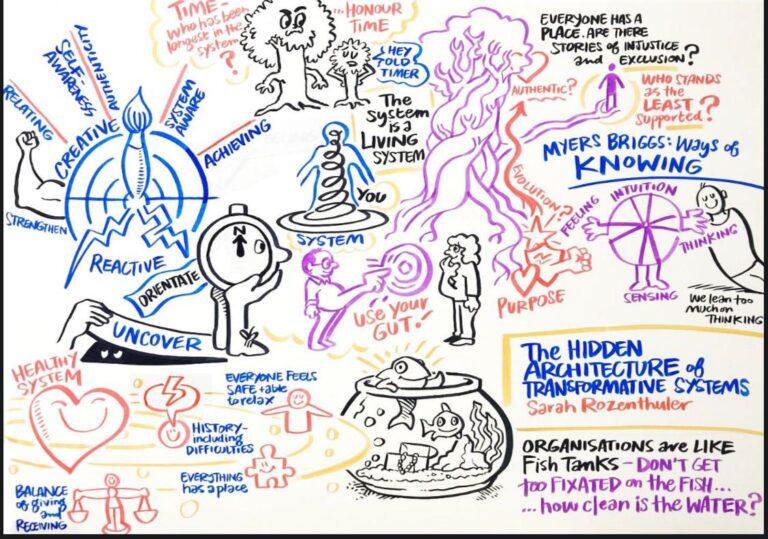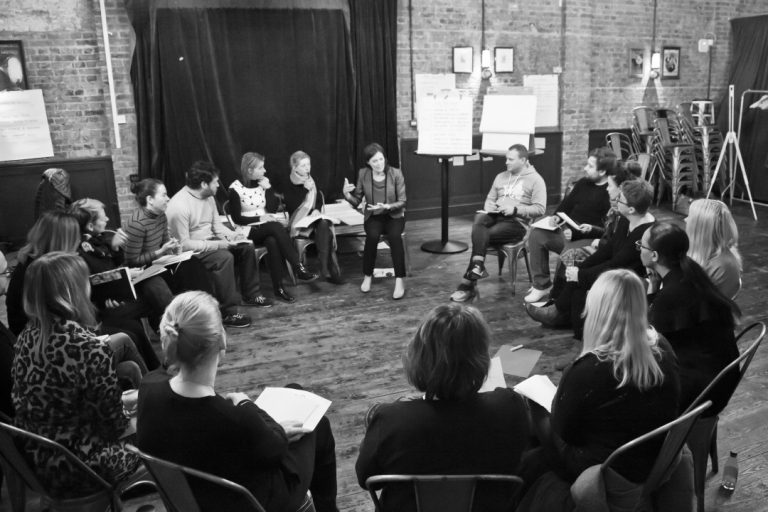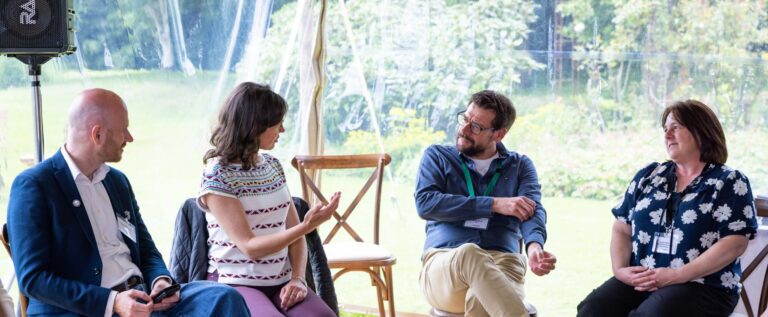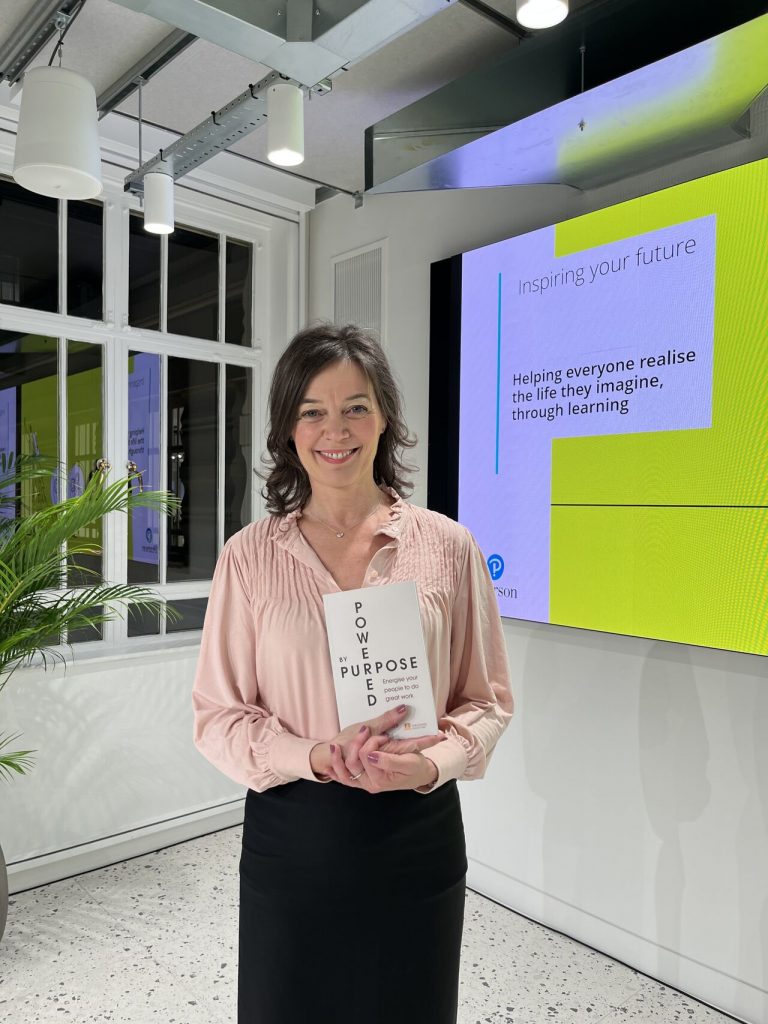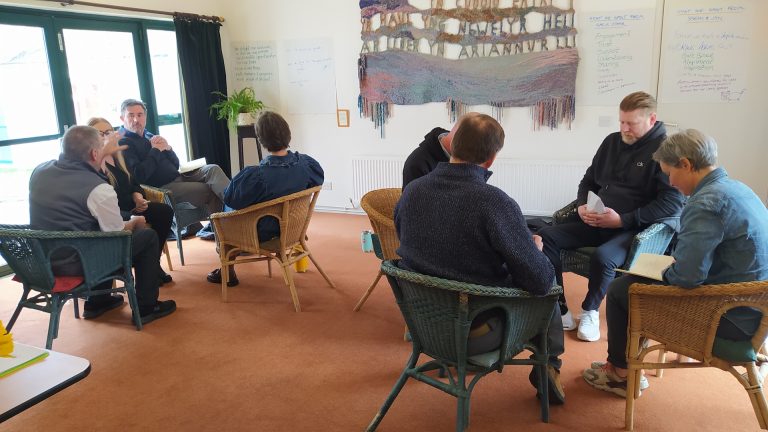
Having worked with leaders and their teams for over 15 years, a crucial insight I’ve had is that the ability to foster and hold dialogue is a critical skill. Holding powerful meeting spaces to navigate critical business challenges and find solutions that strengthen the system as a whole is pivotal to better performance. In this post I share some practical suggestions about how you can create the conditions in your team that will improve problem-solving, decision-making and innovative thinking.
What do we mean by dialogue?
Bill Isaacs, one of the world’s leading authorities on dialogue, and a former colleague, writes in his seminal (1999) book, Dialogue and the Art of Thinking Together:
“Dialogue, as I define it, is a conversation with the centre, not sides. It is a way of taking the energy of our differences and channeling it toward something that has never been created before. It lifts us out of polarization in into a greater common sense, and is thereby a means for accessing the intelligence and correlated power of groups of people.” (p. 19)
Dialogue, viewed in this way, is an inherently collective activity. It arises in the space between people, not by individuals thinking or operating alone. Instead of focusing our attention solely on individual leaders, we expand our attention to what is happening in their midst. Dialogue weaves between people and creates a rich tapestry of meaning that can only emerge from minds meeting in mutual respect. Isaacs continues:
“The intention of dialogue is to reach new understanding and, in doing so, to form a totally new basis from which to think and act. In dialogue, one not only solves problems, one dissolves them. We do not merely try to reach agreement, we try to create a context from which many new agreements might come. And we seek to uncover a base of shared meaning that can greatly help coordinate and align our actions with our values.”
By talking and thinking together, a shared pool of understanding emerges. Out of this, new insights, and possibilities for action arise. Dialogue is not, therefore, merely a “talking shop.” True dialogue, particularly in a corporate context, leads to aligned action across a system. When there has been a true exchange and synthesis of views, there is coherence in co-creating the new. Isaacs goes on to say:
“Dialogue is a conversation in which people think together in relationship. Thinking together implies that you no longer take your own position as final. You relax your grip on certainty and listen to the possibilities that result simply from being in a relationship with others — possibilities that might not otherwise have occurred…” (p.20)
Dialogue involves people coming into contact with one another. The roots of the word dialogue come from the Greek words dia and logos, where dia means “through” and logos translates as “word”, or “meaning”. In essence, a dialogue is a flow of meaning that moves through a group of people gathered together.
Dialogue flows most easily – and creatively – when people speak to what is moving “through” them in the moment. This authentic voicing, combined with deep listening to all the different views that people express, creates an expansive emotional space where truth can be spoken. In such a “container” or holding environment, difficult, even unpalatable issues can be surfaced without relationships rupturing. When our attention can include – and go beyond – any single view, the field of possibilities widens.
For the new to flow in, people need a different stance. Instead of the more typical behaviours that dominate meetings – asserting an opinion, objecting to an opposing point of view and discarding another’s perspective – a more receptive mindset is called for. As David Bohm, an eminent quantum physicist and philosopher, wrote in his book On Dialogue (1996):
“In dialogue … nobody is trying to win… There is a different sort of spirit in it. In a dialogue there is no attempt to gain points, or to make your particular view prevail… It’s a situation called win-win… in which we are not playing a game against each other, but with each other. In a dialogue, everybody wins.” (p. 7)
Or, as I put it in my own book, Life-Changing Conversations (2012):
“A true conversation is a co-creation”
When there is a culture of dialogue, breakthrough solutions and new insights emerge as the product of collective intelligence.
What is needed to call dialogue forward?
Creating a culture of dialogue is an act of leadership. It has greatest potential when sponsored by an organisation’s most senior leaders, but anyone at any level of an organisation can contribute.
Although seeding a culture of dialogue is a generative process with as many forms and manifestations as there are people and organisations, four key elements in the process stand out.
(1) Focused intention. Someone needs to hold the desire to activate a culture of dialogue. Drawing a group of people together to create shared meaning and to discover new insights provides a powerful and necessary energetic foundation for dialogue to take place. An invitation to talk needs to stir people into action. As practitioner and academic Gervase R. Bushe puts it in the OD Practitioner Journal, (Winter, 2013):
“I try to hold out until we have framed the issue in a way that community members will be “willing to crawl over glass” to attend events where that is what is being talked about… The framing of the issue has to be open enough to allow unexpected, surprising ideas to surface.”
(2) A charged container. Someone needs to create a meeting space for the dialogue. There are concrete aspects – including the room, light, air, seating and access to nature. There are also more subtle aspects: as people enter the space, they need to feel able to open up and suspend “business–as–usual”. A crucial component is that people feel a sense of safety and trust. They need to believe that bringing themselves authentically to the conversation will be respected – and rewarding. When people meet authentically, openly and expansively, this “charges” the space with co-creative energy.
(3) Diversity of perspective. “It’s as if we’ve been programmed to be collectively smart,” writes James Surowiecki in The Wisdom of Crowds (2004). In order for a group of people to be “wise”, however, certain criteria need to be met. Chief amongst these is that participants have diverse points of view. People need to feel that their uniqueness and perspective – and that of all the others – is encouraged. There needs to be an atmosphere of welcoming, curiosity and acceptance.
(4) Dialogic practices. Participants need to learn and share skills that foster dialogue. Embodying new patterns – for example, of speaking, listening and asking questions – may sound simple but it is often not easy. Leaders need practical support, committed practice and ongoing encouragement for these ways of interacting to become the new muscle memory.
When teams improve their dialogue, new possibilities open up. What’s exciting is that there is a whole ‘communications technology’ available that leaders can draw on to help them. Better dialogue leads to better decisions, which in turn leads to enhanced performance and more fulfilled team members. It all starts with turning towards one another and having a more creative conversation.
What to find out more?
To download a free ebook on Leading Systemic Dialogue, click here

